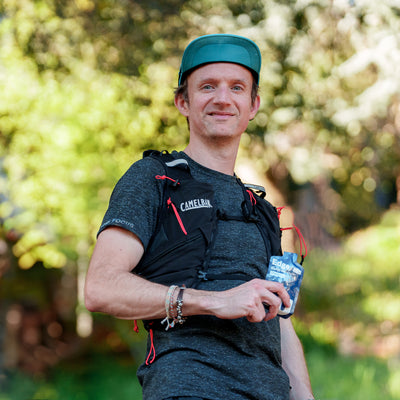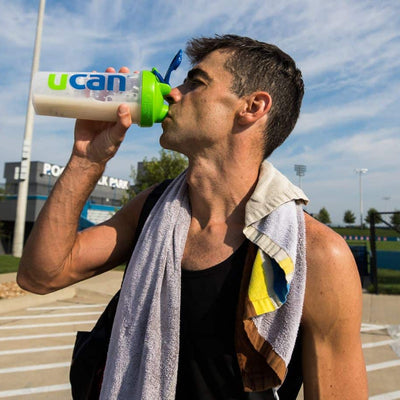“Better endurance” could mean so many things – walking two flights of stairs without feeling winded, running your first marathon, or anything in between. You might be pushing yourself to set a 10k PR or trying to keep up with your kids on the playground. This article will tell you the best ways to build endurance as a new athlete. We’ll focus on the first steps you take (both literally and figuratively) in your fitness journey and how to create a solid plan to keep you away from injury. Whatever your goals are, we can all feel better with improved endurance. In the second half of this post, we’ll run through a few basic metrics to track and look out for as you build endurance. This includes heart rate, intervals, nutrition, and recovery between workouts. At the end of this article, we’ll wrap everything up in a quick guide to start building endurance as a new athlete. Here is an overview of what we’ll cover in our guide to the best ways to build endurance as a new athlete:
- What is Endurance?
- What is Stamina?
- Endurance vs. Stamina
- How to increase Endurance and Stamina
- Find Your Target Heart Rate
- How to Increase Your Training Gradually
- Decrease Recovery Time Between Sets
- Fuel Properly for Every Workout
- Rest and Recovery Properly
Beginner’s Guide to Increasing Physical Endurance
What is Endurance? Endurance is defined as the ability of a muscle or muscle group to contract in a specific way for a certain amount of time. Muscular endurance is the ability of a muscle to contract for a certain amount of time, not necessarily near its maximum capacity. Cardiovascular endurance is the heart’s ability to contract for a long time. Of course, your heart is continuously contracting as it beats throughout the day – cardiovascular endurance refers to the heart’s ability to beat significantly faster than its average rate during intense exercise.
What is Stamina? Stamina is defined as the ability of a muscle or muscle group to contract near its maximum capacity for a specific amount of time. Endurance and stamina are closely defined, but the main difference is that stamina is all about maximum capacity contraction while endurance is about lasting for longer. A sprinter, for example, is maximizing their stamina for just a handful of seconds at a time. Conversely, an Ironman triathlete is more focused on improving their endurance since they exercise for upwards of seven hours at a time.
Endurance vs. Stamina For new and beginner endurance athletes, most of your training should be focused on improving your endurance rather than your stamina. Training your stamina is more important for elite athletes or those training for a particular event such as a Spartan race. Beginner athletes should focus their training on sessions that improve their muscular and cardiovascular endurance, or the ability for those muscles to contract over a long period. When training your endurance versus stamina, you need to focus on your pacing more than your current effort. Pacing is critical in endurance sports, as this is what allows you to maintain your muscular and cardiovascular performance for more extended periods. Let’s dive into the specifics of endurance training.
How to Increase Endurance and Stamina Almost everyone wants to know how to increase endurance for exercise. The answer is relatively simple, but it requires some hard work. To increase your endurance and stamina, you must complete hard strength and cardio workouts with short rest periods. Many people fall into the trap of only doing low-intensity cardio sessions, such as walking on a treadmill or spinning on an elliptical for 30 minutes. While these sessions can increase your endurance and stamina, the effect is marginal compared to your baseline. The most effective way of increasing your endurance and stamina is through high-intensity strength training, interval, and cardio sessions. It sounds complicated, but it’s not. Take a typical gym workout and shorten the rest periods between exercises. You will increase your endurance and stamina. In other words, make your two-minute rest period 20 seconds. When people ask how to build stamina for sports, we’re talking about short bouts of high-intensity exercise with short rest periods. Cardiovascular exercise is still an effective way of increasing your endurance and stamina as a new athlete, but only when you include both low-intensity and high-intensity sessions. If you only do low-intensity cardio sessions, your fitness will stagnate, and your endurance and stamina with plateau. People often ask how to build your stamina in a week or how to build your stamina in two weeks. The answer is very much the same: you need to complete a mix of high-intensity and low-intensity training sessions that include both strength training and cardio. For example, go to the gym three days a week to complete a 60-minute workout that includes weight lifting, rope pulling, jogging, and more. Crucially, there is a limit on how much high-intensity training you can benefit from. It is not beneficial to train at high intensities more than 2-3 days per week. At more than three days per week, you will carry so much fatigue into your next workout that you will be unable to improve, and your endurance will stagnate.
Find Your Target Heart Rate As mentioned above, pacing is key to endurance training and performance, especially for new athletes. You can pace yourself in a number of ways, but heart rate is one of the most reliable and effective metrics of all. Knowing your heart rate training zones will help you find will target heart rate for endurance training. This is the heart rate you will target for about 80% of your training, and this will help you achieve the most significant fitness gains while avoiding injury and burnout. There is a lot to cover on heart rate training. Visit mymottiv.com for everything you need to know about heart rate training zones.
Increase Your Training Gradually Here, we’re talking about progressive overload, the gradual increase of stimulus over time that elicits a significant response. In other words, you need to increase your training over time gradually. Otherwise, you will plateau. The best way to improve cardiovascular endurance is gradually increasing your training volume from week to week. You can quantify your training in many ways, such as overall volume, amount of weight lifted, time spent exercising, or time spent in specific heart rate zones. It is best practice to track your weekly training and focus on increasing your volume by up to 10% per week. For example, suppose you are a new athlete training for an average of three hours per week. In that case, you should begin increasing your training volume by 20-30 minutes per week. You should never jump from three hours of training per week to six hours per week. That is a recipe for injury or burnout. 
Decrease Recovery Time Between Sets Many people ask, what is the best workout for increasing stamina? In truth, improving your endurance and stamina is less about the details of the workout and more about the recovery time between exercises. When you are training your endurance and stamina, you are training your body’s ability to hold an elevated heart rate for an extended period. Whatever exercise you do, as long as it elevates your heart rate, you are training your endurance and stamina. Of course, some exercises are better than others in how they stimulate specific muscle groups, reduce your risk of injury, and are fun and exciting. For most people, walking is pretty boring, for example. But 30 minutes of weight lifting with ten different exercises and short rest periods sounds much more enjoyable. Overall, you want to decrease the time between exercises to improve your endurance and stamina. Specifically, shorten your recovery periods to 10-30 seconds. Here’s an example of a circuit training workout that you could complete with 20-second rest periods:
- 10 burpees
- 10 squats
- 10 lunges
- 10 push-ups
- 10 sit-ups
Fuel Properly Fasted training is one of the biggest pitfalls for new athletes. While it might seem appealing to “burn maximal body fat” with each workout, there are many trade-offs that make fasted training too risky for new athletes. Instead, you should fuel your workouts with carbohydrate-rich meals approximately three hours before your training session. This will give your body ample time to digest the meal while priming your muscles for exercise. It is best practice to refuel your efforts post-workout with a mix of carbohydrates and protein. Many new athletes prefer specific protein shakes, energy bars, or fruit smoothies, to name a few, as they are convenient and can be easier on the stomach than a big meal right after a workout. UCAN products are in a class of their own for endurance sports nutrition because they provide easy access to energy, in the form of a steady-release carbohydrate LIVSTEADY, while keeping blood sugar stable. The energy from UCAN lasts much longer than the refined sugars found in traditional sports nutrition products and they are easier on your stomach. The Edge energy gels are a great way to get started to fuel workouts and the Energy Bars curb cravings and deliver balanced energy to fuel your day. Want to know how many calories you should be eating in racing and training? Use this calculator below designed by us at MōTTIV to calculate your exact ideal amount of calories needed, based on your sport, your bodyweight, and your pace:
Rest and Recovery You don’t get stronger during your workouts – you get stronger when you rest in between workouts. A hard workout damages your muscles and drains your energy stores. Still, it is in the recovery period after the workout that your body builds back stronger. Without sufficient rest in between training sessions, you will be continually breaking your body down without any room for improvement. This is called overtraining, and if left untreated, it can lead to complete burnout. In order to avoid overtraining, you should stick to a structured training program that involves 2-3 hard sessions per week, especially for new athletes. As you gain experience, you can add additional workouts to your week, though they should be low-intensity training sessions.
Summary For new athletes, the prospect of beginning endurance training can seem daunting. How do you start from scratch? Focus on 2-3 training sessions per week that involve a mix of strength training and cardio exercises. Shorten your rest periods between exercises to 10-30 seconds, and focus on being consistent each week. Rest and recovery in between each training session, allowing your body to repair and come back stronger. Gradually increase your training over time, and focus on your pre-workout and post-workout nutrition. Pace yourself in each workout and from week to week and soon your endurance and stamina will be better than ever.








